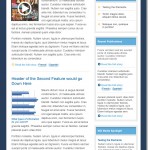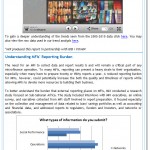The demise of email newsletters as an effective B2B marketing tactic has been, to paraphrase Mr. Twain, grossly exaggerated. In fact, email newsletters can be a critical part of an ongoing lead nurturing strategy.
At minimum, a well-crafted newsletter serves to break up what would otherwise be an unending sequence of more offer-oriented emails peddling white papers, Webinars and the like. Newsletters also serve as a convenient vehicle for announcements, news bites, tips and techniques that might not otherwise merit their own dedicated message.
For all their benefits, however, newsletters are a royal pain to produce. They commit the publisher to a critical mass of content on an overly aggressive schedule, content that in turn depends on multiple contributors who never seem to share your same sense of urgency. In my experience, most corporate email newsletters have a relatively short lifespan. They launch with great fanfare and optimism, only to gradually diminish in frequency until they die on the proverbial vine altogether.
Here then are a few lessons learned to help your e-newsletter succeed and prosper:
1. Plan your newsletter with a specific goal and audience in mind.
A newsletter cannot be all things to all people. It cannot cater to customers and prospects and press/analysts and be in any way cohesive and effective. It’s far preferable to focus your newsletter on one, specific audience (say, existing customers) and a corresponding goal (say, reducing churn and increasing upsell opportunities.) Working with a specific target audience and goal helps to focus the content in a way that will resonate with the intended readers.
2. Create an editorial calendar and identify contributors.
Brainstorm all possible topics for the newsletter (keeping in mind the audience and goal, as above) and then whittle that list down into 4 or 5 categories. Examples could be Case Studies, Best Practices, Industry News, Opinion/Analysis, etc. Then assign those categories to specific contributors, aligned by subject matter expertise. Make the requirements simple: say, a 200-300 word article every 6 weeks. Use Google Alerts, social media, and your PR agency to help spot potential topics. Give yourself “breathing room” so that if one contributor fails to deliver on time, it doesn’t doom that issue.
3. Host the newsletter as a blog.
There are countless reasons to host your newsletter on a blog platform like WordPress. It allows you to post content on a more timely basis, so that news items aren’t always weeks old by the time someone reads them in newsletter form. It permits comments, likes, social sharing, and other interactive functionality that you don’t get with a simple email newsletter. It allows for greater flexibility in how people choose to subscribe: via email, Twitter, RSS, or Facebook. And perhaps most importantly, it extends the shelf life of newsletter content well beyond the inbox, by allowing it to live on in search results where it can continue to generate traffic, subscribers, and sales leads.
4. Make it look good.
A well-designed newsletter increases open rates, readership, sharing, and new subscribers. It also creates a consistent flagship for your brand, serving to maintain awareness for your company and your solution. To the right is a recent “newsletter makeover” our agency conducted for Microfinance Information Exchange (MIX), the premier source for microfinance performance data and analysis. Spear Art Director Laura McInerney describes the change:
“Our main objective for the new design was to add visual hierarchy, better organize the content, and give the newsletter an overall sense of purpose. We added a sidebar to make more content accessible at first glance, and also added multiple Calls to Action to increase reader engagement. The result is a much shorter email that still disseminates a lot of information while accommodating vital content above the fold.”



Can you comment on the possible integration of paper newsletters with eNewsletters? Is it a good idea to have both?
Hi Tom,
Thanks for your question. Even as a dyed-in-the-wool direct marketer, I’d struggle to think of many scenarios in which a hard copy, direct mail newsletter is justified these days. Perhaps if you don’t have email addresses for some significant segment of your house list, but even then I’d be trying to think of ways to acquire that data before I sunk a big, regular investment into printing and mailing. There are just so many advantages to e-newsletters (and other electronic vehicles like Facebook, Twitter, et al).
Howard